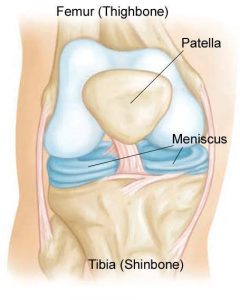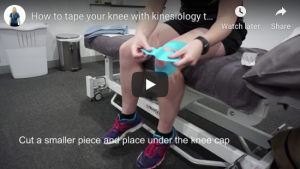09 Dec Meniscal Injury
You may have heard of it, but do you know what the meniscus actually is? Or what happens when you injure it?
What is it: The meniscus is the cartilage tissue in your knee joint that sits on top of your shin bone. There are two in each knee (the medial and the lateral meniscus) and their special shape adds stability to the knee joint and provides cushioning to the bones, acting as a shock absorber during activity.
Cause: The meniscus can become injured (torn or bruised) when the knee is forcefully twisted, which may cause damage to the surrounding ligaments at the same time. It can also be torn gradually from wear & tear over time.
Signs & Symptoms: The knee is painful, particularly on weight bearing activities, and may be mildly swollen. You may also experience sensations like clicking, giving way, catching or locking in your knee. It is often sore to touch along the knee joint line and may be most painful when fully straightening or bending your knee.
Confirm diagnosis: There are some tests that a physio can do to suggest a meniscal tear is the cause of pain. This can be confirmed on MRI, however an MRI is not always necessary in the early stages especially if it is unlikely to change the initial treatment. MRI is typically recommended if there are signs of associated damage to other structures (ligaments or bone) in an acute injury. In a more longer term injury, care must be taken with imaging as sometimes meniscal tears can show on MRI that are not actually symptomatic, which can cause confusion about the correct diagnosis of your pain. I recommend always discussing the pro’s and con’s of imaging with a physiotherapist to ensure your treatment plan is focusing on the right diagnosis.
How to treat it: In the early phase the goal is to settle the pain, then work into increasing the capacity of the tissues around the knee to support the meniscus. This may involve a period of rest early on, then working gradually back into activity while strengthening the muscles around the knee and higher up at the hip. A useful taping technique to help decrease the pain in the early phase can be found here.
Specific strengthening and stretching exercises should be completed under the guidance of a physiotherapist. To find a physio in your area of Australia or New Zealand click here. I’ll share with you my favourite early stage exercises for meniscal injuries in a later post.
Surgery, such as an arthroscope is often performed to repair a meniscal tear, however research is now suggesting that completing rehab with a physiotherapist can be just as effective as surgery in many cases. I recommend discussing your condition with your physiotherapist, GP and surgeon and explore all of your options before heading straight for surgery.
Recovery time: Depending on the location of your meniscal injury and your commitment to rehab, recovery can range from a few weeks to many months. This can be due to the limited bloody supply to certain parts of the meniscus, which means healing can take longer for certain tears. The older you are can also influence recovery, as blood flow to meniscus decreases with age.
Products: A light compression knee support or brace can be beneficial for symptom relief, but should be worn under the guidance of a physio.
Remember to sign up to my mailing list or follow me on Facebook or Instagram for regular physio tips.




